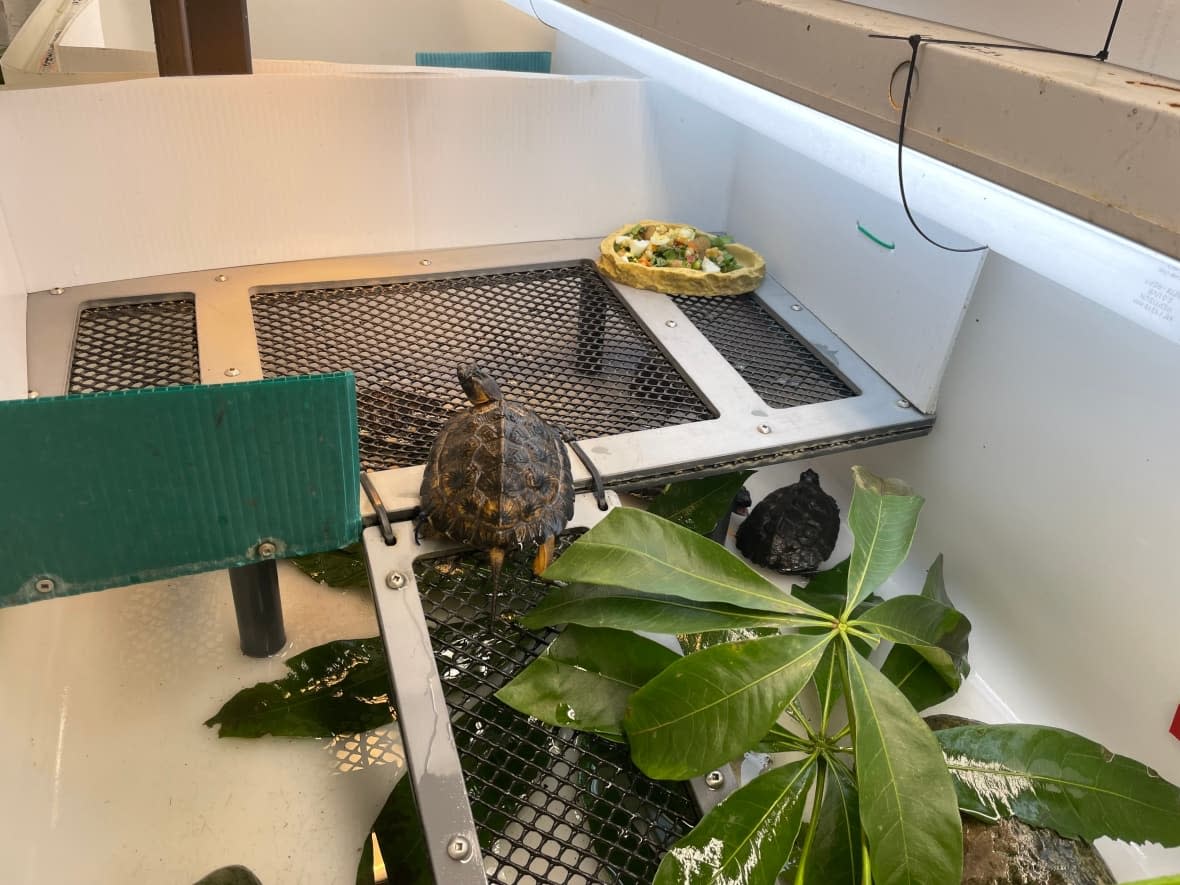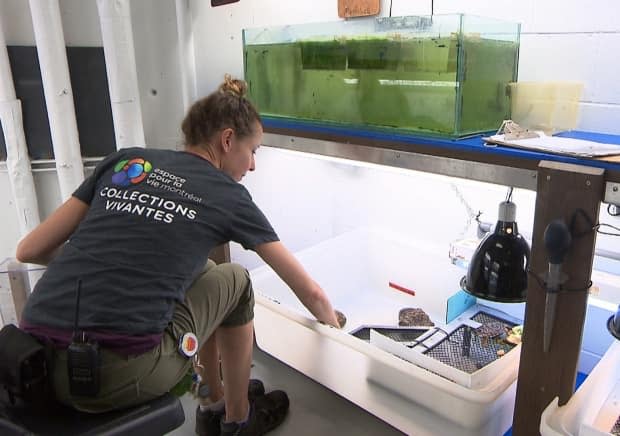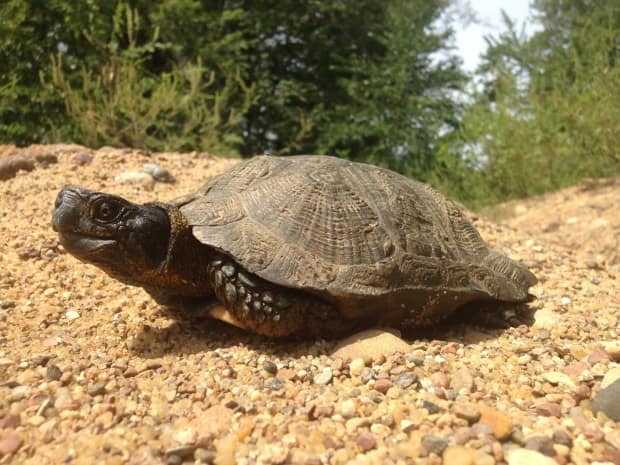How the Montreal Biodôme is helping a threatened species regain its footing in Quebec

It's a journey that begins at the Montreal Biodôme and ends in the green embrace of Quebec's wilderness all in an effort to save a species that can use all the help it can get to once again thrive in its natural habitat.
"It's kind of a head start program," said Gheylen Daghfous, a conservation officer at the Biodôme.
Since 2014, over 200 wood turtles have been released into nature. The reason is simple: with the species at risk, Quebec's Forests, Fauna and Parks Ministry wants to help boost its survival rate.
So the turtles are hatched and raised in a place where they are safe from predators, severe weather or anything else that might cut the life of a young turtle short.
"We're trying to increase their survival rate so after one year or two — once this critical period will be over — we'll be able to put them back in the wild and hopefully they will do well," said Daghfous.
Along with carefully incubating the eggs and waiting for them to hatch, animal caretakers like Linda Paetrow have to make sure the little turtles are eating properly.
"On even days, we give them a platter of fruits and vegetables with a little bit of egg or banana. And then on odd days we give them earthworms which we cut up for them so that they are easier to eat," said Paetrow.

The trick has been to keep track of each individual turtle to make sure they are healthy and gaining weight.
"We have a system where each scale at the hind end of their shell is allocated a number. And then we pass a thread of a certain colour through one of these scales," said Paetrow.
The thread helps workers keep track of how each turtle is doing. They will give each turtle a name and monitor its health.
This system has come in handy. Staff noticed one turtle had lost five per cent of its body weight recently and was swimming a bit on its side. This could indicate a pneumonia infection, so it was put on antibiotics and hand fed, Paetrow said.
"She gained back her weight and she's doing very well now," she said.
Setting young turtles free in wild
Once the turtles are finally brought out into the wild, they first are put in a cage outdoors to adapt to their new environment.
Paetrow said the wood turtle spends more time on land than any of Quebec's aquatic turtles, and that can put them at risk of getting hit by cars or even poached by people "because it's a very beautiful animal."
The risk turtles face when travelling on land is something Mélanie Roy knows all too well. She's a biologist at a non-profit conservation organization called Appalachian Corridor that operates in southeastern Quebec.

Earlier this summer, in the span of just a couple of days, Roy spotted five dead turtles that were hit by cars. One of them was carrying eggs.
"It's a subject that breaks my heart," she said.
Roy said citizens should report any turtle sightings to the website carapace.ca and take a picture of the animal, to help biologists identify the problematic areas for the turtles.
She said people should stop and help the animals if it's safe to do so. One way to help, she said, would be to act as a traffic controller and notify other drivers of the turtle.
If the danger of crossing is imminent, Roy said people can pick up the animal and move it. But they should do so with gloves, only touch the back of the shell and most importantly, always cross in the direction that the animal was heading.
Protecting critical habitats
Earlier this year, the Nature Conservancy of Canada (NCC) announced the protection of two critical habitats, covering some 115 hectares, for at-risk wood turtles in the Mauricie region.
The two sites are part of an ecological corridor linking them to surrounding wood turtle habitats, including the Parc national de la Mauricie and other NCC-protected areas.
"Protecting wood turtle populations is critical to overall ecosystem health. These reptiles act as wetland janitors, eating dead plants, insects and animals, helping to clean the ecosystems around them," the NCC said in a news release back in May.
"With a lifespan of over 50 years and their signature unhurried manner, wood turtles are notorious for taking their time to find the perfect place to lay their eggs — sometimes exploring a site for days before deciding on a nesting place."


